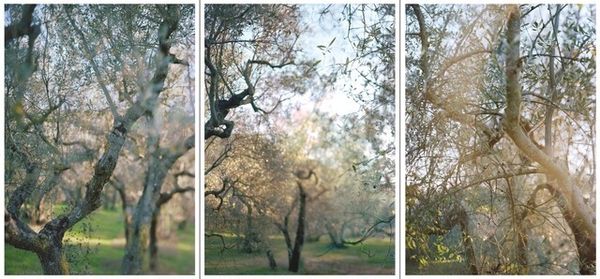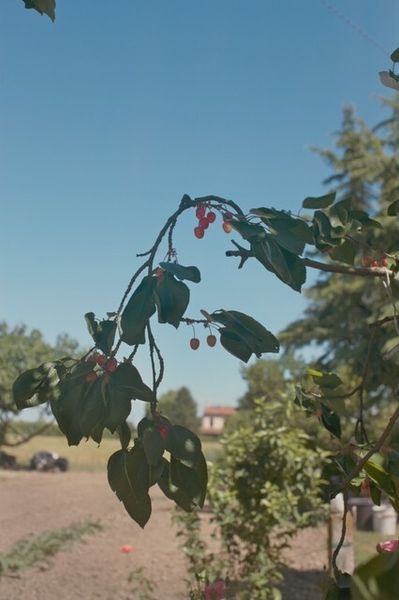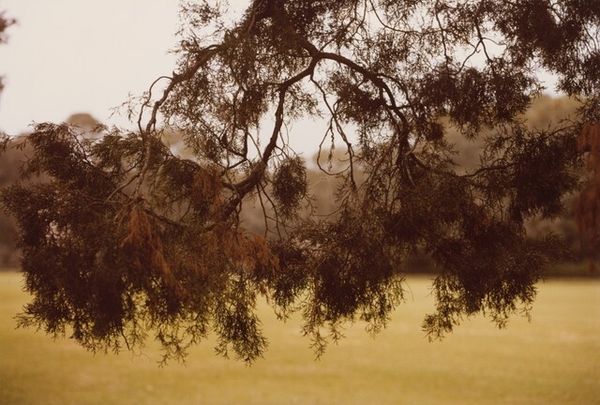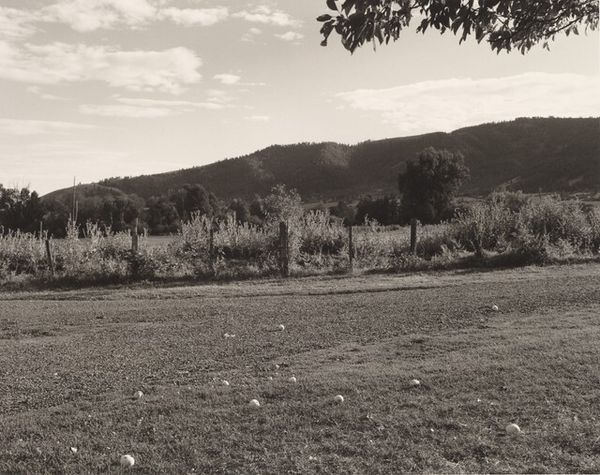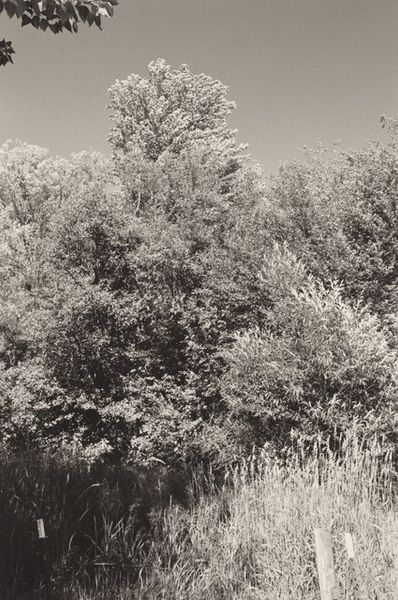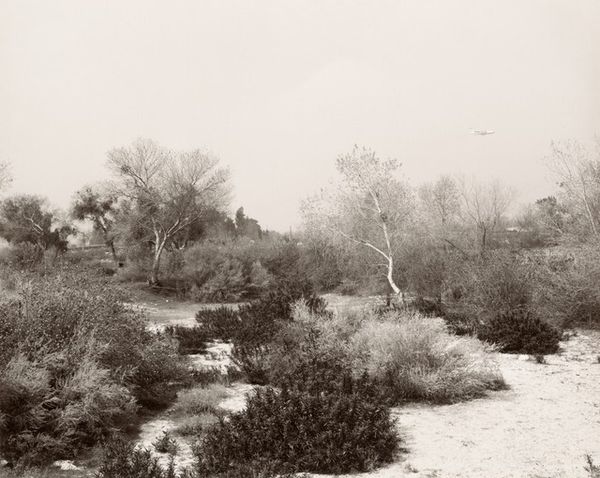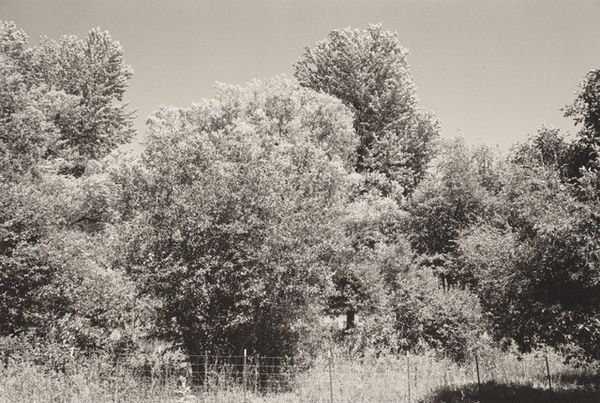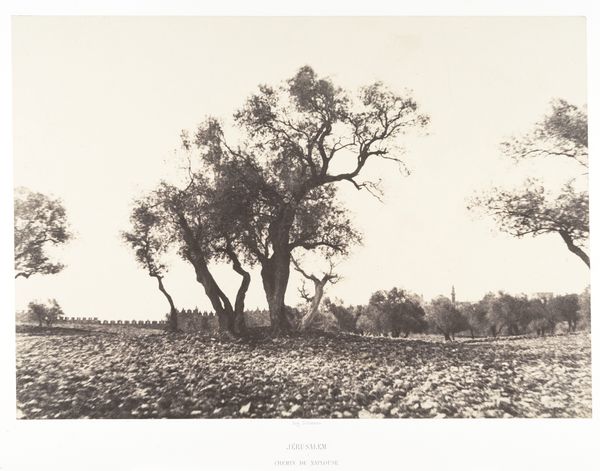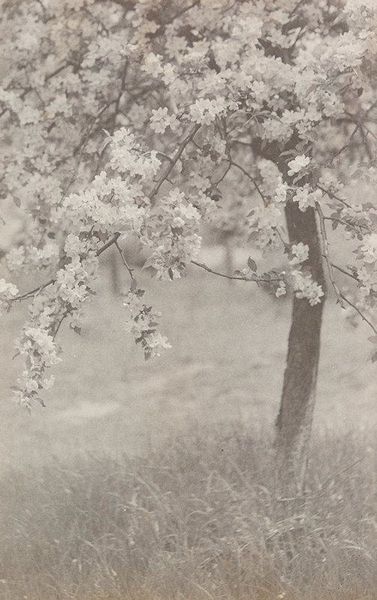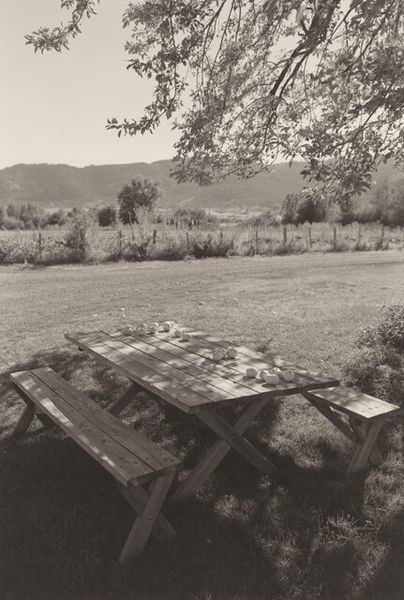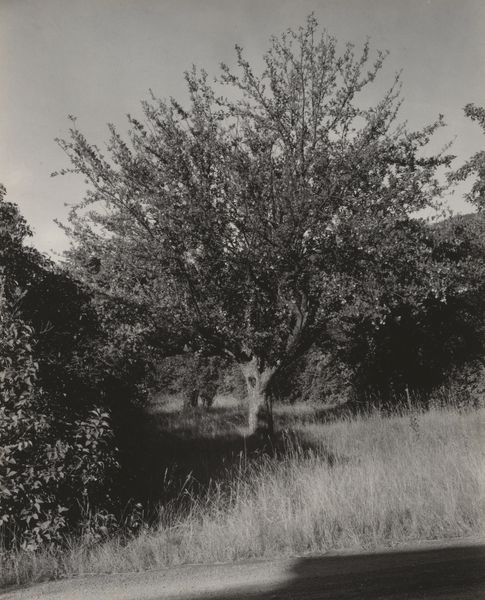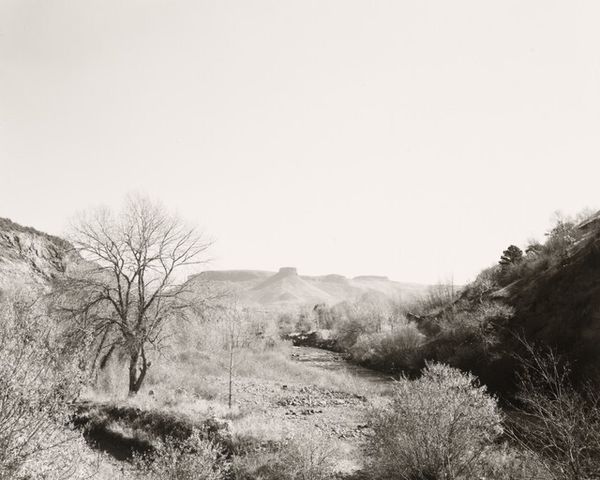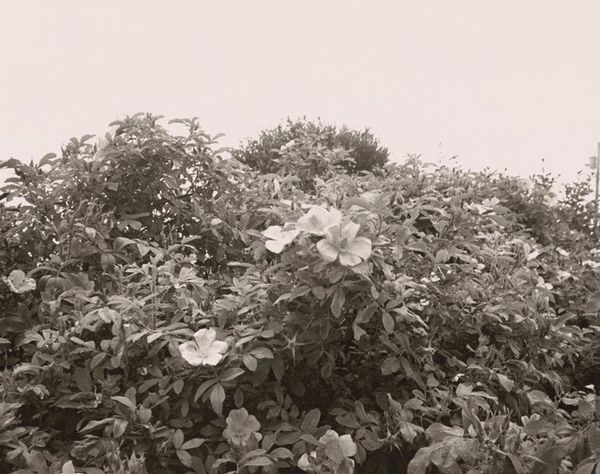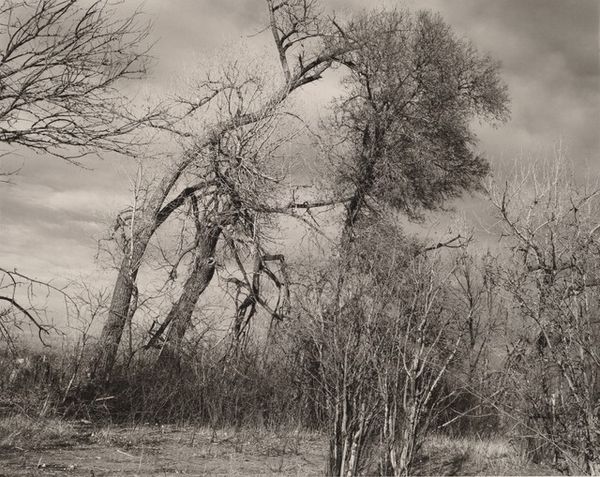
photography
#
landscape
#
nature
#
street-photography
#
photography
#
modernism
#
realism
Dimensions: image: 36.6 × 46.8 cm (14 7/16 × 18 7/16 in.) sheet: 40.7 × 50.8 cm (16 × 20 in.)
Copyright: National Gallery of Art: CC0 1.0
Editor: Here we have Joe Maloney's photograph, "Paramus, NJ," possibly from the late 70s or early 80s. The array of trees feels both meticulously planted and yet somewhat desolate. It’s a really interesting contradiction. What's your read on this, thinking about its historical context? Curator: Considering the time period, and focusing on the cultural backdrop of landscape photography, the seemingly straightforward realism of this image raises questions about suburban development and the public's changing relationship with nature. Is this nature, or nature carefully crafted for public consumption? It appears almost staged, doesn't it? How does this image, captured through photography, engage with broader anxieties of its time regarding land use and artificial environments? Editor: That makes me think about how manicured so many public spaces were becoming then. So, is Maloney subtly critiquing the idea of controlled nature? Curator: Precisely. The very act of photographing this scene and calling attention to it suggests a commentary. The composition isn't "untouched nature," but a constructed view. What political undercurrents do you see potentially represented in the deliberate composition of a seemingly benign landscape, given the era's complex relationship with urbanization? Editor: I hadn’t thought about it as a political statement, but now I see it. Maybe it is not celebrating the beauty of nature, but the cost of it in a suburban environment. Curator: Yes, or maybe what we *think* of as "nature" in the late 20th century. Perhaps even a reflection on how photography itself participates in shaping our understanding and consumption of the natural world. What’s the function of this nature: beautification or public relations? Editor: It’s fascinating how a simple photograph can open up such complex ideas about society! I'll never look at suburban landscapes the same way again. Curator: Exactly. Analyzing its social and cultural moment really brings the work alive, don't you think?
Comments
No comments
Be the first to comment and join the conversation on the ultimate creative platform.
